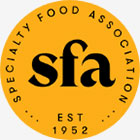

More purchase decisions and visual brand recall are attributed to color than any other element in package design. Understanding how color affects taste perceptions, value perceptions, quality perceptions, and emotive associations is paramount to successful package design in CPG food brands––for both humans and their pets’ food. Food packaging designers use color psychology to create packaging that appeals to consumers and communicates essential information about the product inside.
A fascinating insight from Scott Young’s findings is that “no single color is inherently more visible at retail than any other color. That’s because visibility is a function of color contrast.*” This idea is no more valid than at the retail level in a big store–colors blast the shelves from every hue. When you think of color selection and what it communicates for your brand, brand blocking should be an enormous consideration for shopability and shelf impact.
“No single color is inherently more visible at retail than any other color. That’s because visibility is a function of color contrast.”
Scott Young
Color is the most critical component of brand recognition and differentiation. In the competitive retail environment, brands use color to differentiate themselves from competitors and create a unique brand identity. We all use Coca-Cola’s iconic red packaging as the gold standard for color wayfinding. Its power to be recognized globally is the ultimate force of color.
Owning a color globally is very challenging because cultures and various areas of the world impact color connotations. Still, they can change over time in a category if a brand is powerful enough to lead their perceptions in a new direction. While no color is off-limits for any product, there are solid associations for specific colors. It could be detrimental or, at the very least, confusing to introduce them to your brand inappropriately. On the flip side, it could be disruptive, eye-catching, and speak to brand boldness. Like every branding positioning decision, get informed and weigh the pros and cons.
Color palettes also trend in CPG food packaging design, so gather a baseline understanding of common consumer reactions to color in a category and then make pointed color decisions from there. The choice of color can also impact the perceived quality and value of the product inside. Traditionally, bright, bold colors are often associated with high-quality and premium products, while muted colors are associated with lower-quality products. Matte varnishes and pastels are now reaching the spectrum of products across all values, and luxury brands are going beyond gold or silver packaging to convey a sense of exclusivity.
Chosen strategically, a specific color scheme can create ownability across all their products. Tapping into your “white-space opportunities” (pardon the pun) around color in your particular category is a perfect place to start.
For more insights on color, read this article.
*Young, Scott. Winning at Retail. Skokie, IL: In Store Marketing Institute, 2010. First discovered in Packaging Design: Successful product branding from Concept to Shelf, Authors Rosner Klimchuk, Marianna and Krasovec, Sandra.









